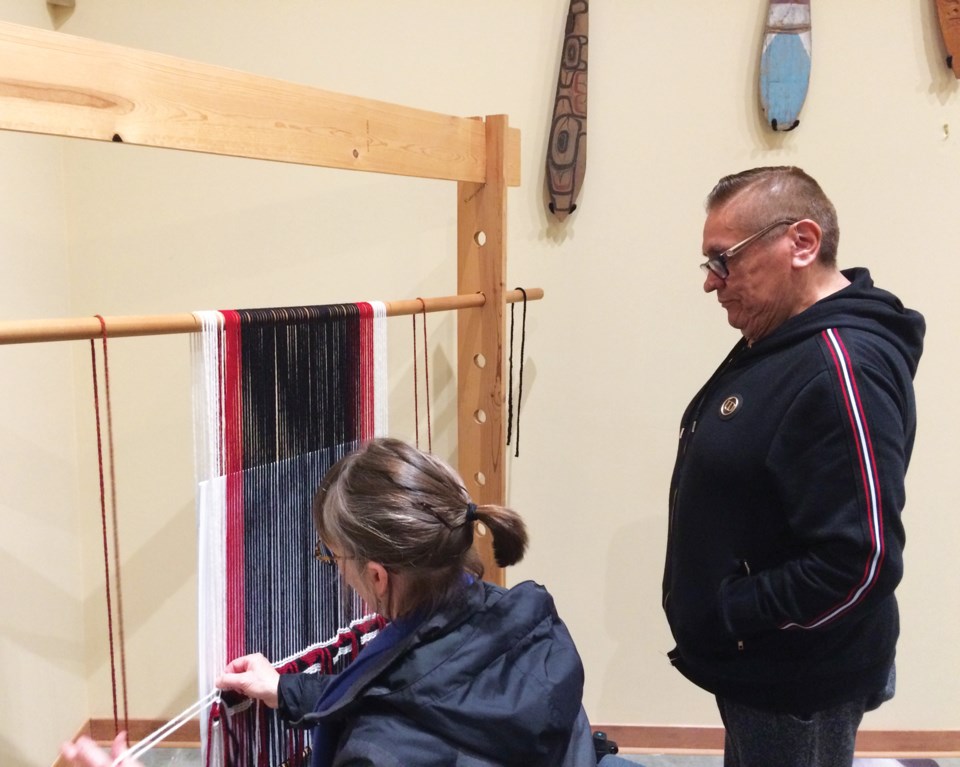The syiyaya Reconciliation Movement has announced a new weaving schedule with a film screening and discussion for the month of May.
In partnership with the Sechelt Public Library, the movement will hold “weaving reconciliation” sessions at the library with weaver kwayimin Andy Johnson on Thursday, May 16, Thursday, May 23, and Friday, May 31, from 3 to 6 p.m. Johnson will be weaving and all are welcome to witness and add their stitches to the fabric of reconciliation.
As well, the public screening and discussion of Episode 3 of the APTN mini-series First Contact has been rescheduled for Thursday, May 16 at 7 p.m. at the Nation Hall. All are welcome. After the 50-minute film, dialogue circles will form to ensure people can replace the heaviness with healing. People will be available for cedar brushing, and counsellors will also be present.
Johnson is a shashíshálhem language teacher at Kinnikinnick Elementary School and a cultural ambassador for shíshálh Nation. He was born and raised on the Sunshine Coast.
“My weaving began in 2005, taught by Janice George and Buddy Joseph of the Skwxwú7-mesh Úxwumixw (Squamish Nation). It was my very first class and I was grateful that our teachers brought back weaving to the shíshálh people,” he says.
“I have woven and taught numerous classes since then, teaching the basic twine and twill. I am also the lead singer of our tl’ikwem Dance Group, and have written four songs for the group to perform.”
Johnson says his two speaker style sashes will be the traditional Coast Salish colours – black, red and white. “Black represents the water, the red represents skalmiwxw – us as First Nations people – and it also represents medicine and healing, and the white represents purity and strength. The sashes will be to honour all the residential school survivors. When one wears a sash it is usually for a speaker, so the sashes will be for all the survivors to be able to speak and share their stories, to be able to heal in a good way.
“I will warp up the sashes in all three colours: black representing the dark times faced by the survivors, and the red and white representing how our shíshálh people are now coming to the light and on a healing journey through reconciliation.”



